Original Item: One of a Kind. This is a very interesting example of the legendary Scottish Sgian-dubh (phonetic Skean Dhu), which in Scottish Gaelic means "hidden knife". These are also often called a "sock knife," as they are always worn in the top of the stocking while wearing a kilt. From what we can tell, this Sgian-dubh actually started life around about 1680 as an Ottoman dagger, with a great quality curved double edged blade of just 4 3/4," mounted into a typically tradition horn Ottoman hilt of the era. As seen in many of the better examples, the blade is "Wootz" or "Damascus" style steel, a crucible laminated steel that gives the characteristic ripple look to the blade.
The dagger was then appropriated during a Scottish Officer's stint in the Crimean Campaign and re-scabbarded in a leather covered wood with plated silver mounted scabbard. The upper is mount engraved with the officer's name: COL. W.F. PRIESTLEY, which surrounds 79TH / REGT. in a circle. The reverse of the fittings shows a thistle blossom, the emblem of the old Scottish Royal Family.
The 79th Regiment of foot also known as The CAMERON HIGHLANDERS, fought at the Battles of ALMA in September 1854, BALACLAVA in October 1854 and at SEVASTOPOL in the winter of 1854. It later traveled on to India to assist in the putting down of the Great Indian Mutiny or Sepoy Rebellion. Of Colonel PRIESTLEY as yet we can find nothing amazing. Great research potential however.
A charming OTTOMAN DAGGER / Sgian-dubh with a second life with a Scottish Regiment, Ready to research and display.




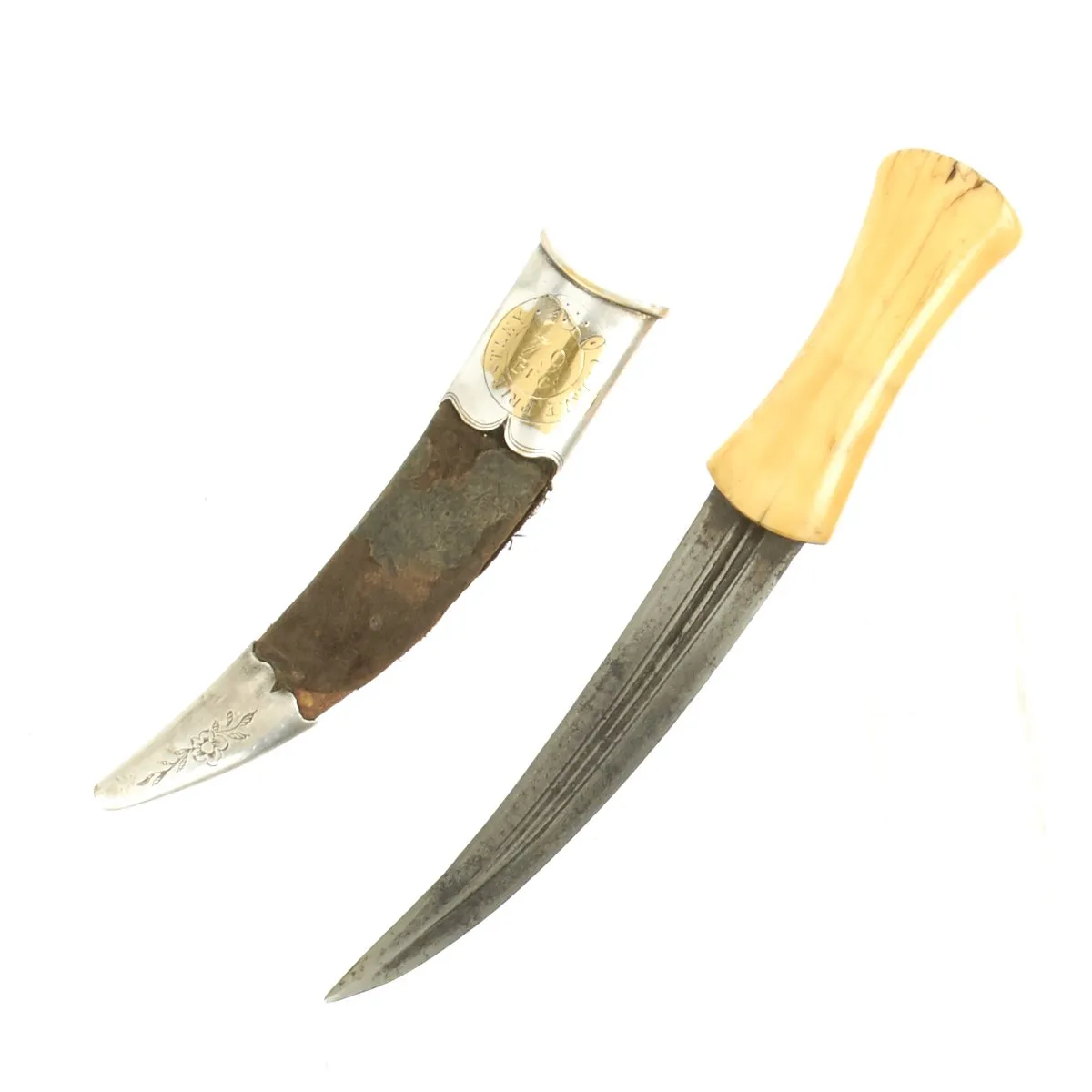
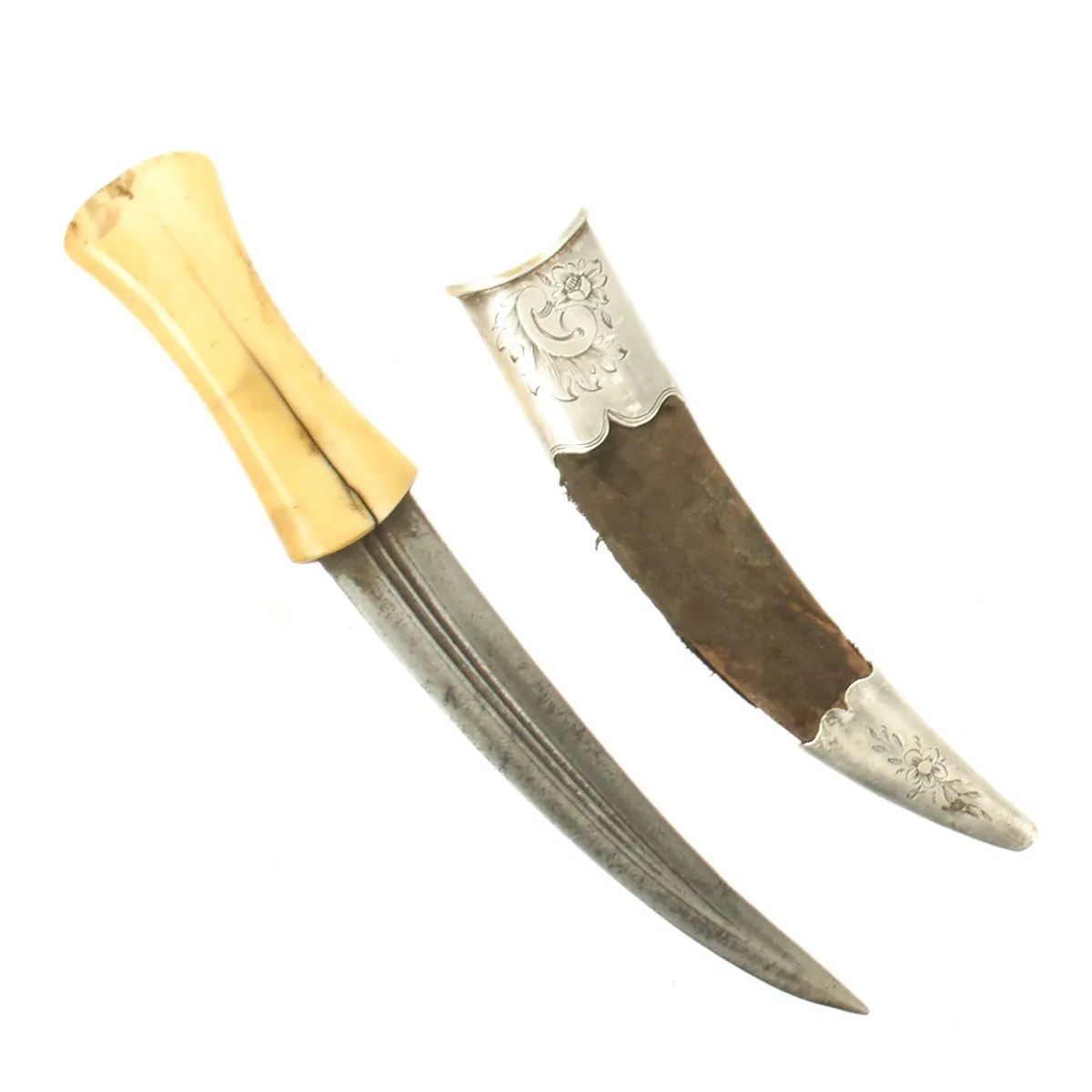
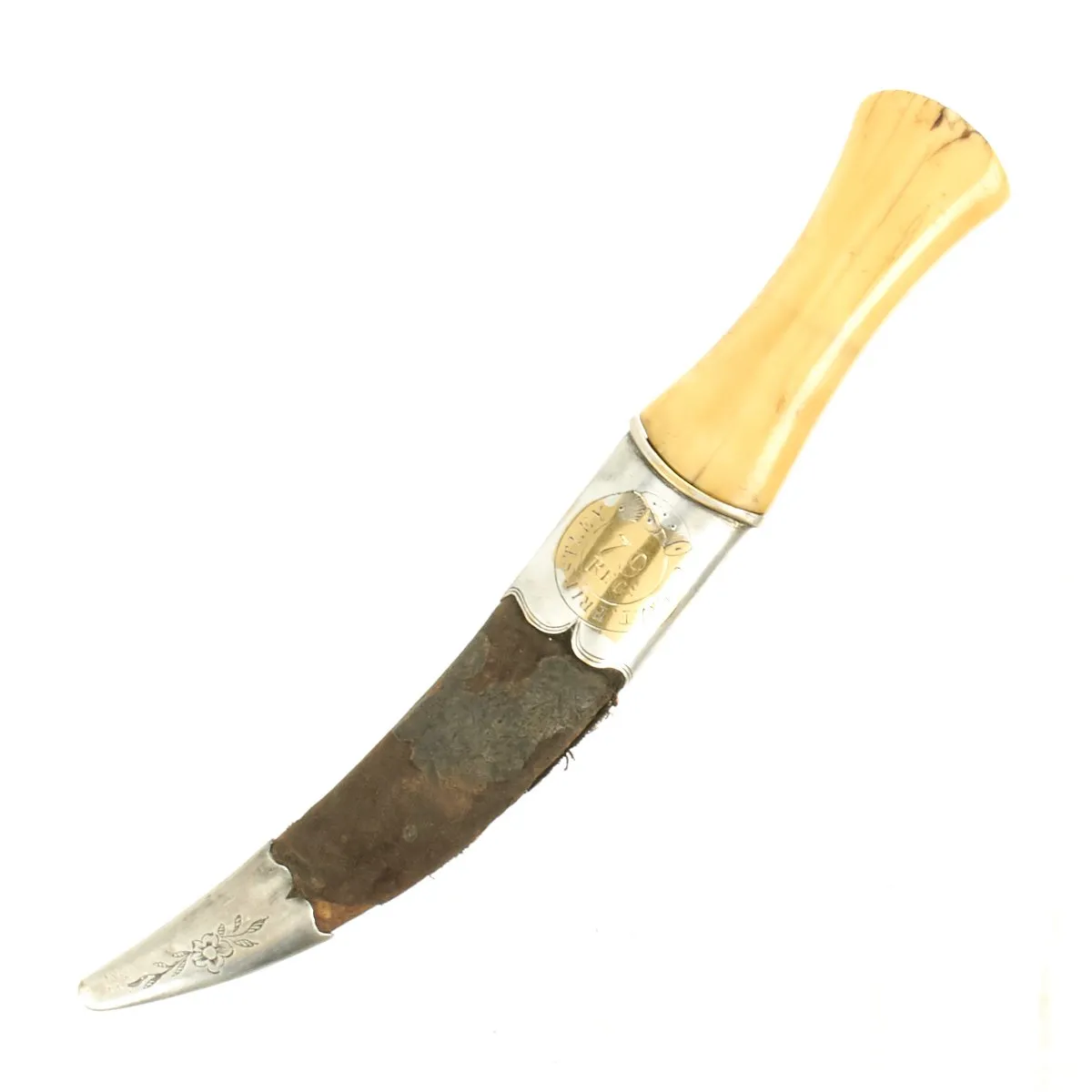

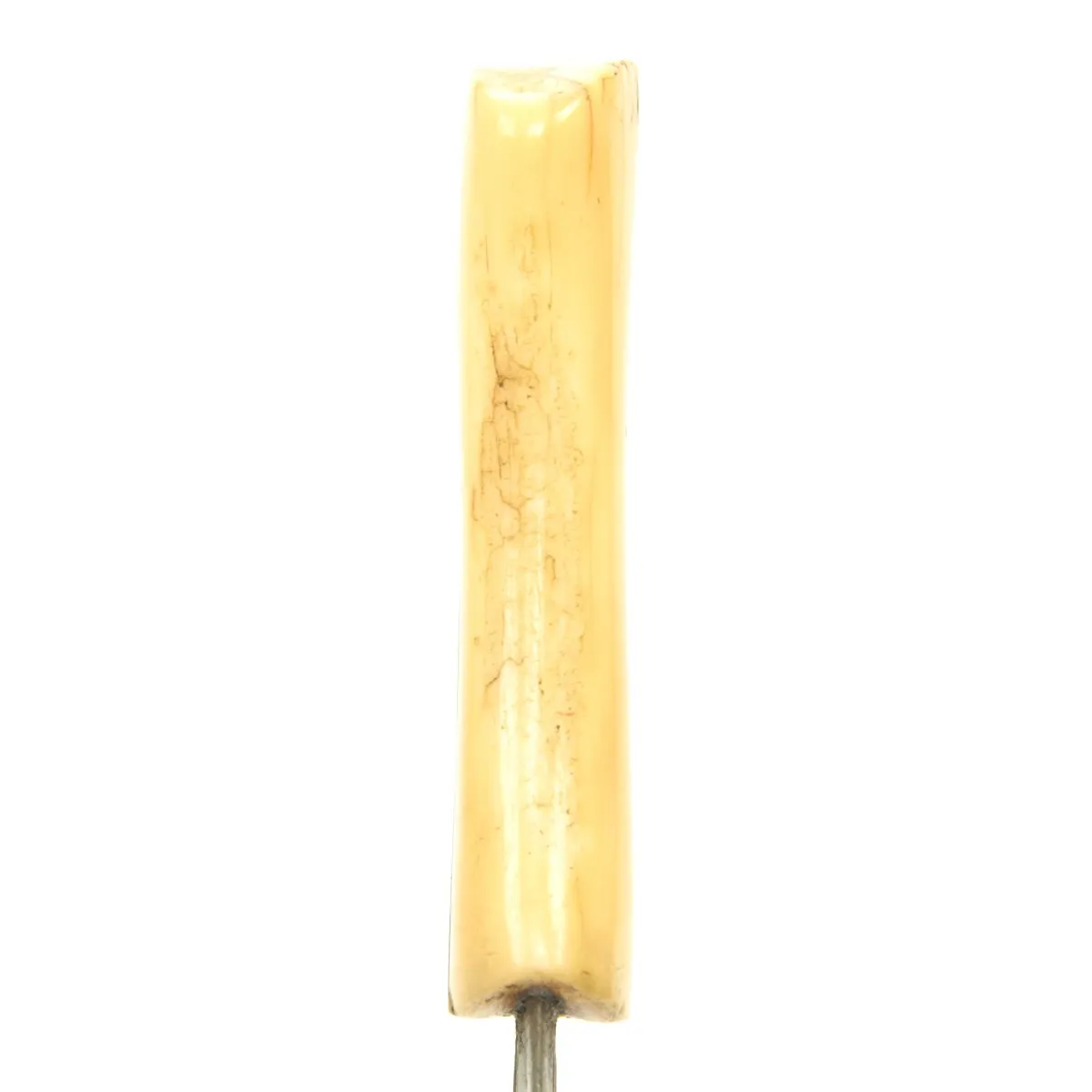

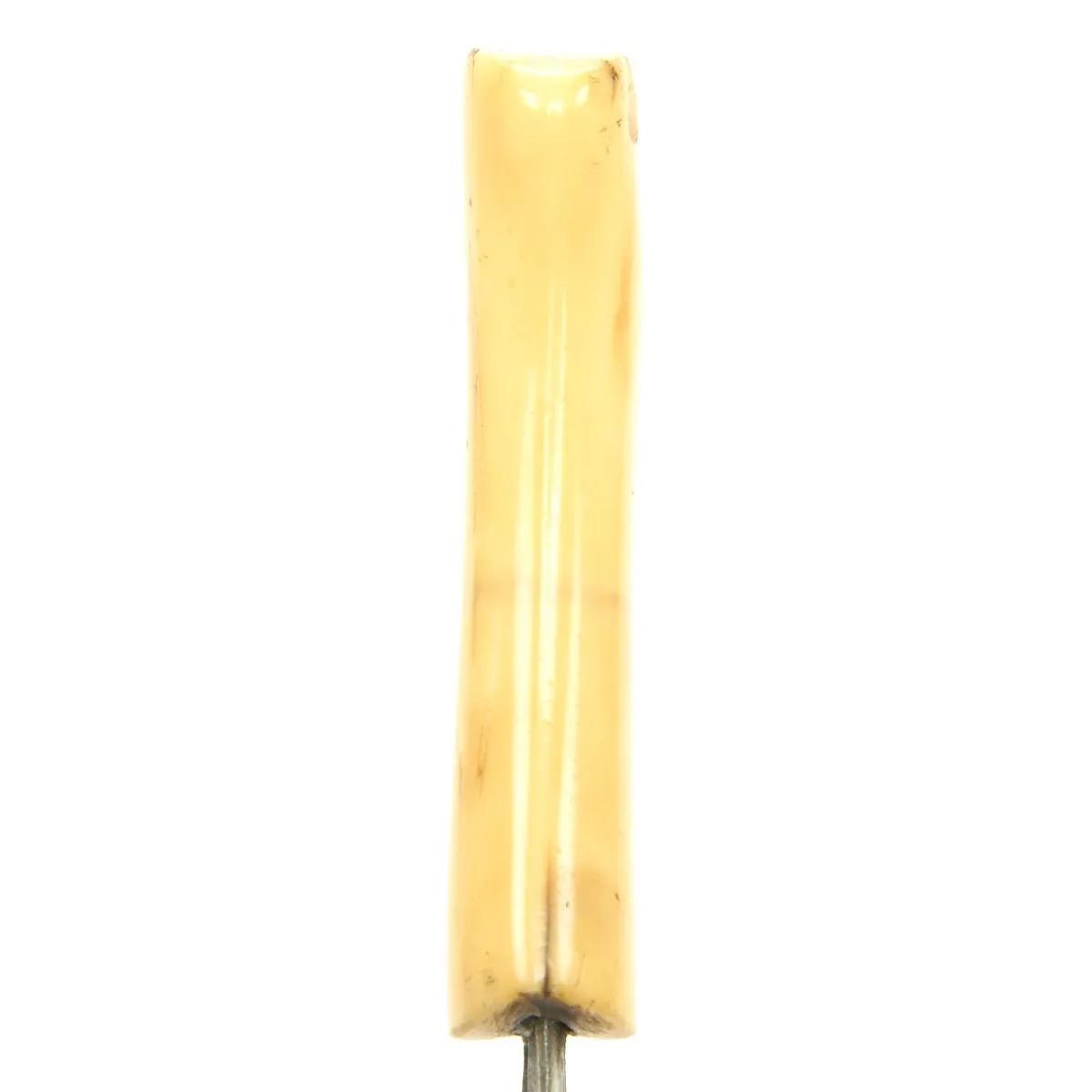
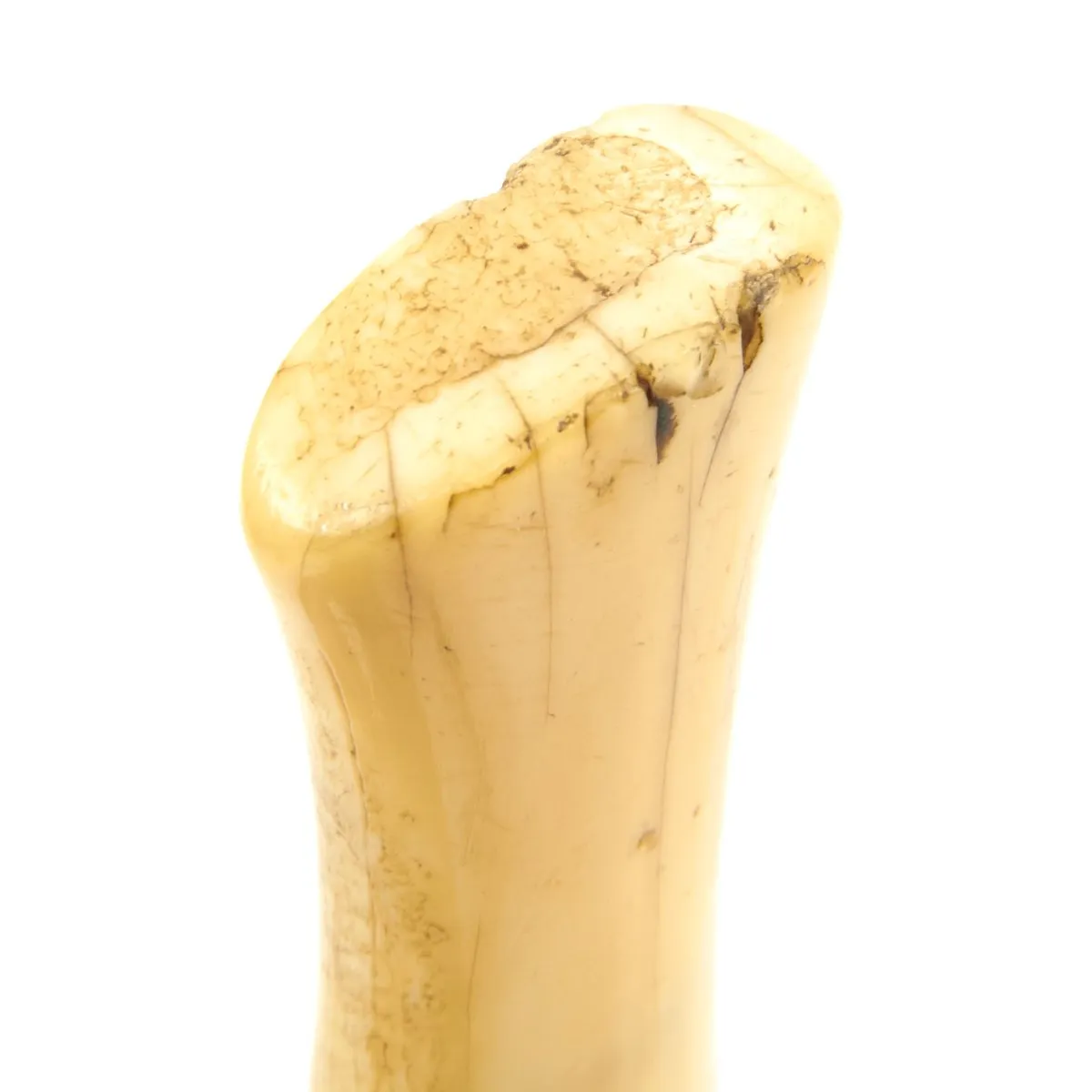
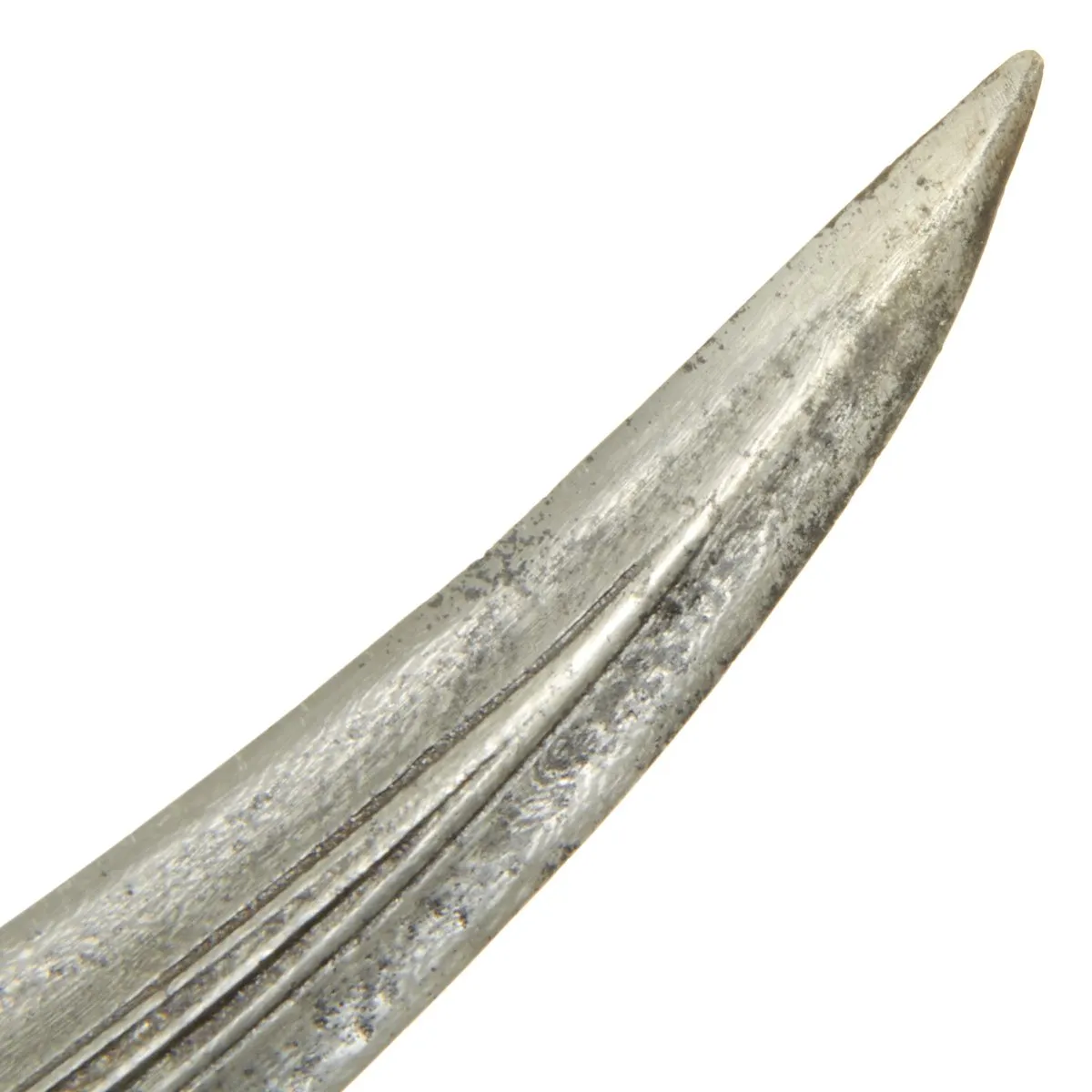
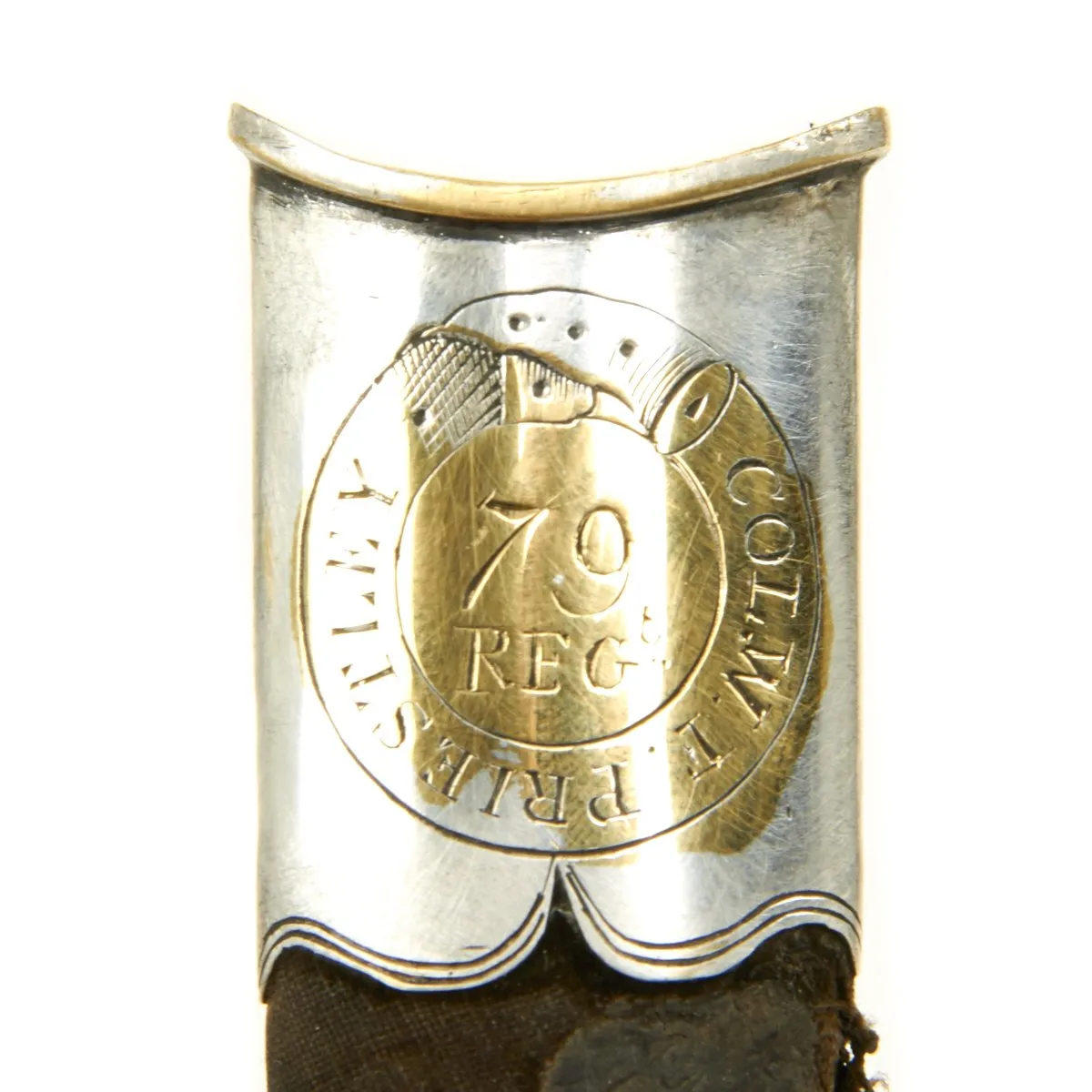

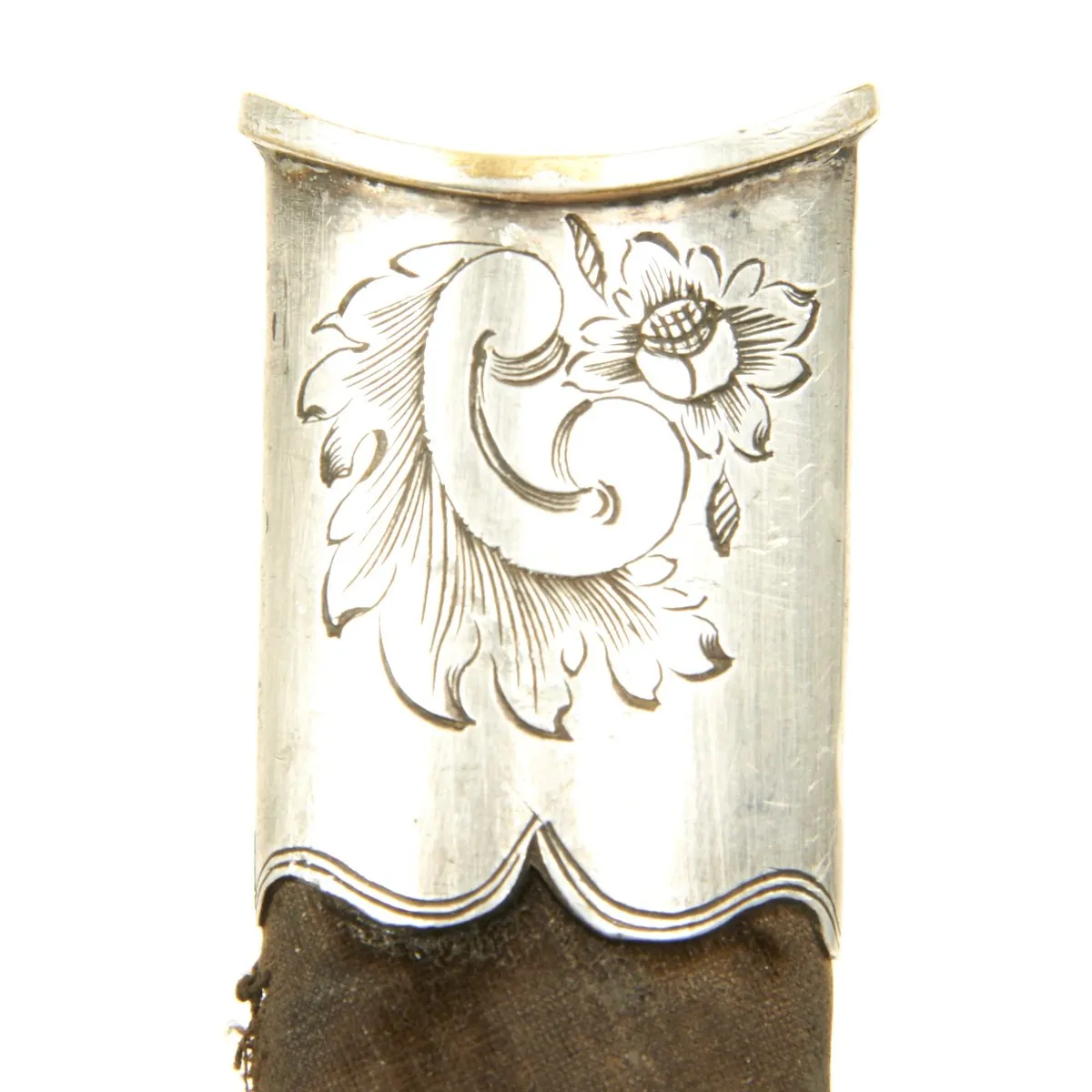
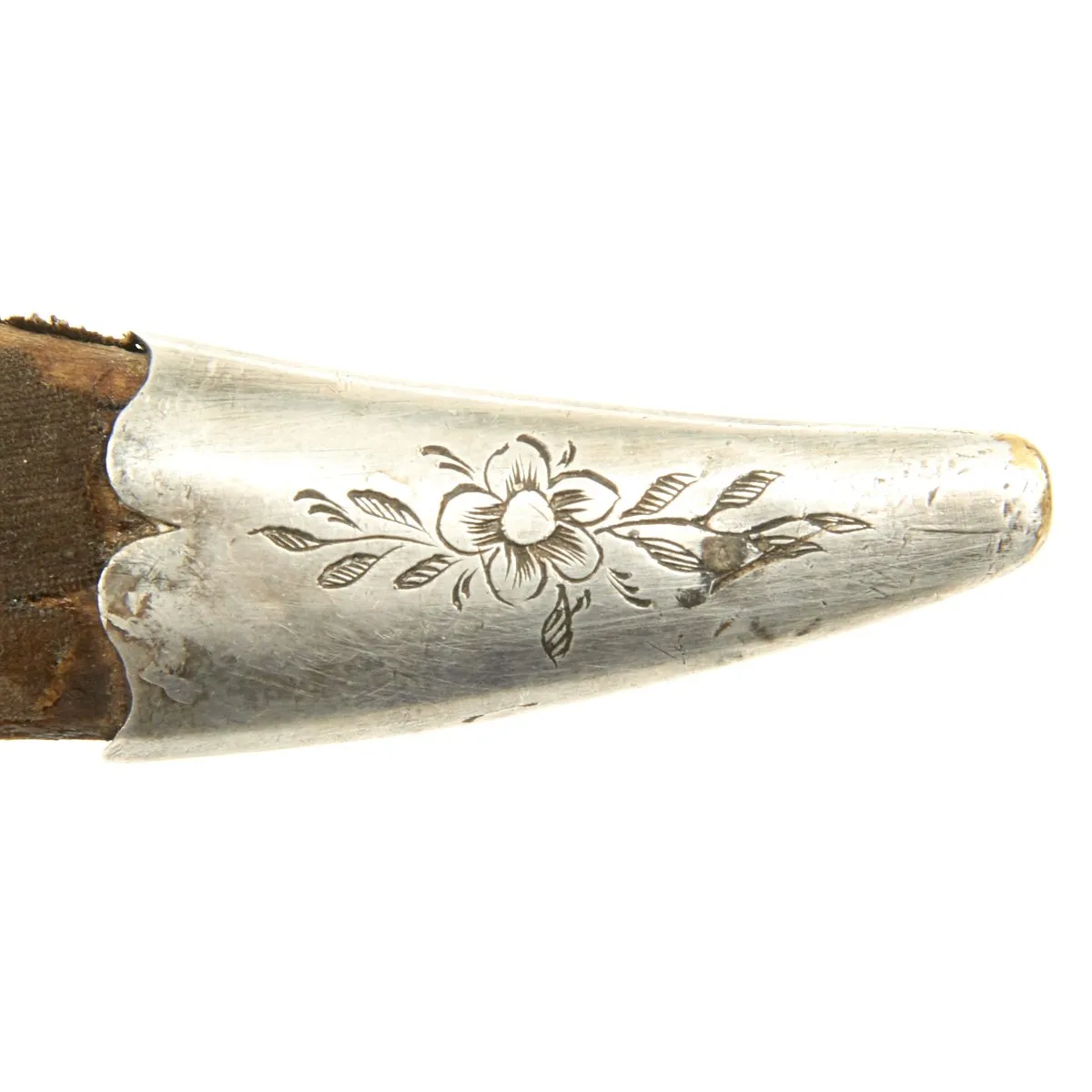




![RAILBLAZA TracLoader Gunnel Track 1000 - 12" [01-4156-11] RAILBLAZA TracLoader Gunnel Track 1000 - 12" [01-4156-11]](https://www.glamorfits.shop/image/railblaza-tracloader-gunnel-track-1000-12quot-01-4156-11_0Z9fgb_300x.webp)





